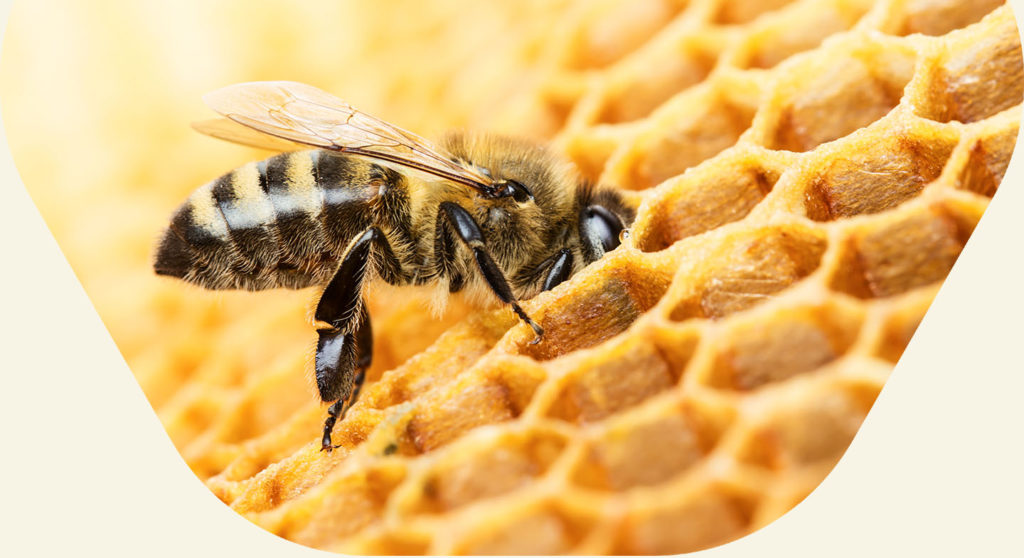API of the month
Mathieu Domecq
Editor-in-chief of the API blog of the month
This month in your API blog of the month, we’re going to talk about beeswax, an important material in the beehive. The beekeeper gathers it to be processed during the autumn, when the season is quieter.
The wax lids recovered from the frames during uncapping will be used to make honeycomb-textured beeswax sheets. Did you know that on average, our bees need to produce 8 kg of honey to make 1 kg of wax?
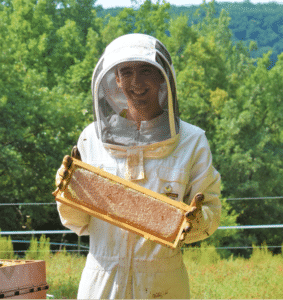
From wax to beehive
Our bee’s honeycomb hives are made of wax. The workers secrete their own wax from their wax glands to shape this honeycomb.
Depending on its age, the bee will carry out different jobs throughout its lifetime: cleaner, feeder, storekeeper, ventilator, guardian, forager, etc. and of course, waxer! Workers aged between 12 and 18 days will have this role. Because their wax glands are more developed, they will be able to build the honeycomb. The bee has eight wax glands on the ventral part of its abdomen. Scales of wax will grow between these mirror segments (or sternites).
What are the criteria for making wax?
– The bee must be between 12 and 18 days old
– There must be plenty of honey
– The temperature in the hive must reach 33°C to 36°C
– There must be a large population for as many waxers as possible
If these conditions are met, a liquid wax is secreted by the wax glands. The wax dries quickly on the mirror segments, forming a white, almost transparent and very fine scale. The bee will detach it from its body with its legs and knead it with its mandibles. A temperature of around 40°C is required for this wax scale to be kneaded easily.
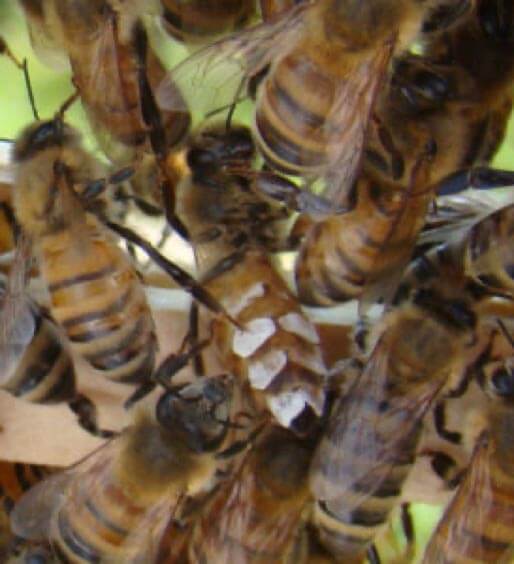
Then our bees will work in groups, forming a giant, almost ‘human’ scaffolding. Hanging onto each other, they build the first wax alveoli. Did you know that it takes more than 1,250,000 wax scales to produce 1 kg of wax? This corresponds to the construction of a complete beehive body. In other words, it takes almost 6 hours of work, per group of around 100 bees, to make a single alveolus!
In order for the wax to hold the frame properly, bees will add saliva enzymes as well as pollen and propolis. It is during this construction that the wax changes from white to the yellow we are familiar with. The wax will continue to change colour until it blackens over time, as a result of everything it comes into contact with, such as the brood.
Waxers build the honeycomb vertically from top to bottom.
Why a hexagon? It’s no doubt the most economical shape. This shape guarantees the best rigidity and maximises space. A super frame with 100 g of wax can then support 2.7 kg of honey.
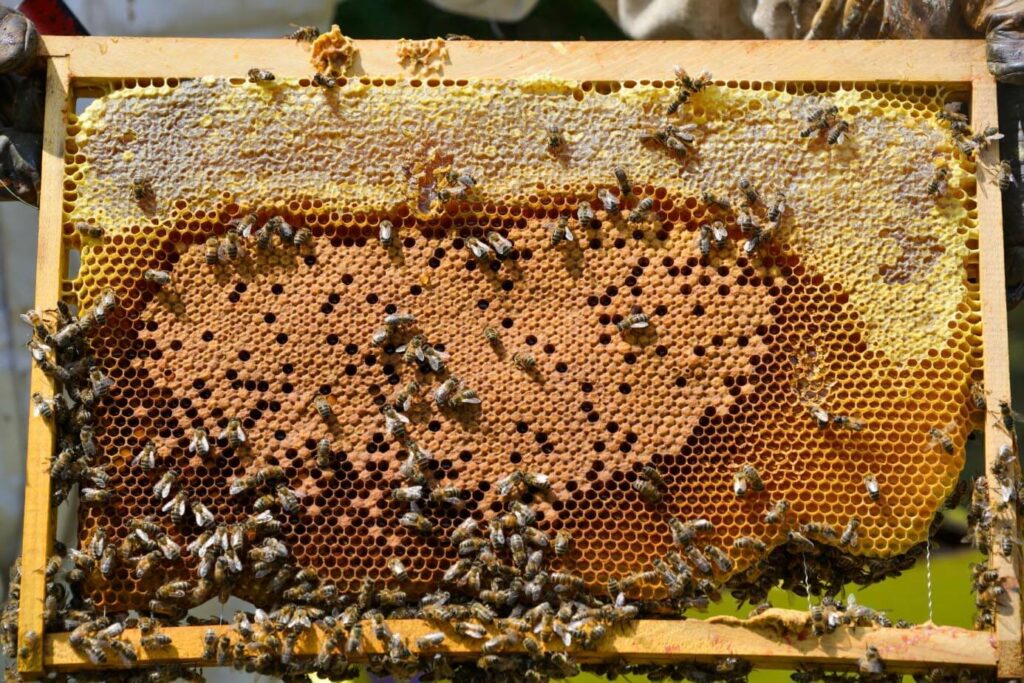
Why add a wax sheet?
As you can tell, the honeycomb wax sheet will save the bees time and effort.
If the waxer makes a 100 g Dadant body sheet, the bees will add material to the honeycomb construction. This mass of wax will almost double. There are about 800 alveoli per dm² on a honeycomb.
This wax honeycomb produced by our bees is firstly used for storage of honey/pollen and secondly for raising the brood (from egg to nymph).
Wax is a fatty material, i.e. it absorbs impurities such as residues of molecules (insecticides, varroa treatment, etc.) like a sponge.
Installing a wax sheet is good, but bees have a natural need to build. To do this, and in order to clean the contaminated frames, we recommend that you change at least two body frames each year.
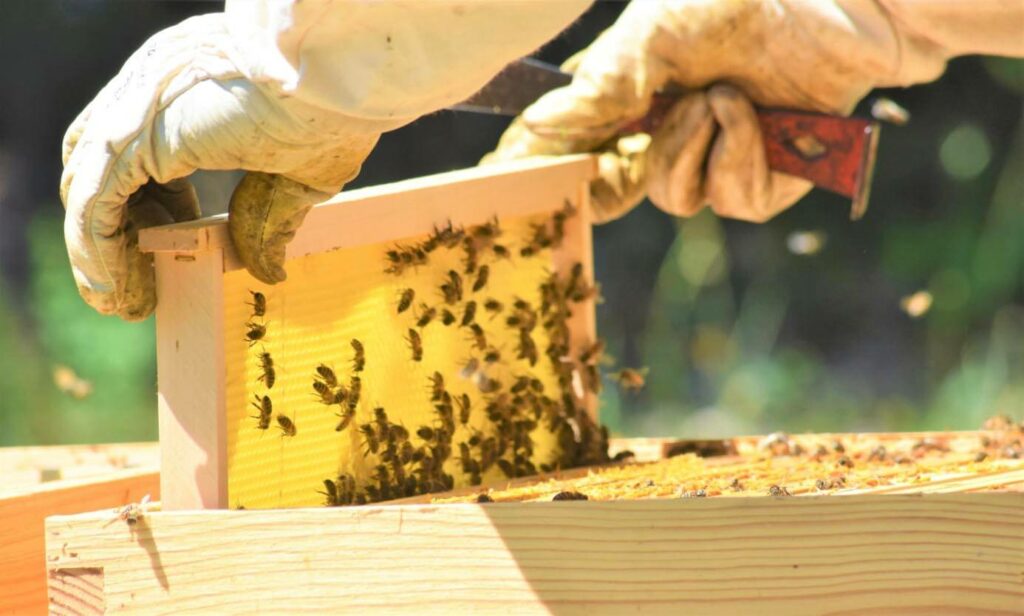
Reusing beeswax
The beekeeper will be able to save the wax by recovering the caps from the harvest during uncapping. Once melted, this wax will be cleaned and transformed into a sheet by the waxer. A solar wax extractor or boiler (gas or electric) can be used. Whatever the appliance, the caps are placed in the tank and melt once heated to over 70°C. Once recovered, the purified wax bars are handed over to the waxer to create the famous honeycomb beeswax sheets.
For small quantities, you can bring your wax blocks to your beekeeping store, which will exchange them for sheets.
What are the stages of forming a honeycomb structure?
Your wax will be melted in a bath to make it liquid again. Then a hot wax roll will be formed on a mat. It will then pass through a rolling mill engraved with honeycombs to give it this print. When it comes out, the sheet is cut to the dimensions of the desired frame.
So, make sure not to waste any more of your bees’ wax – a lot of work goes into it!
As usual, share your photos with us. They will be posted on our website from social media using the hashtag: #apifonda #apiinvert!
We’ll be back next month on your API blog with your faithful partner, Les Ruchers De Mathieu!

LES RUCHERS DE MATHIEU
Honey & Beekeeping Shop
Photos ©lesruchersdemathieu
